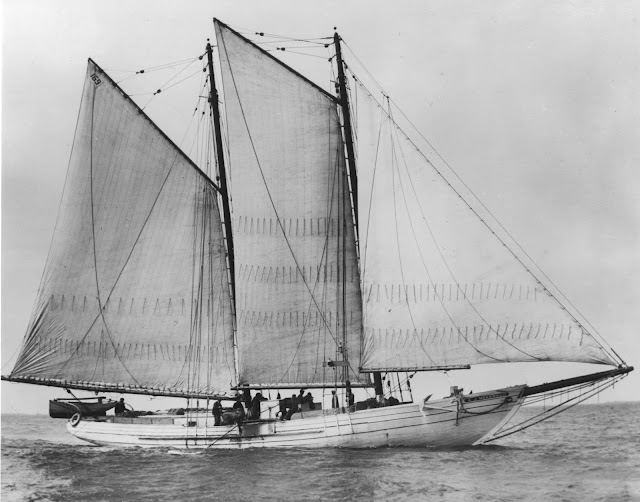.

The Delaware Bay oyster boats had two masts.
Single mast triangular sail with headsail on sprit.
The boom extending beyond the stern on the oyster boats would be let out to almost 25 deg to wind direction to create a large airfoil, or let out in line with wind direction to stall the boat while working over an oyster reef, usually with wind on beam and crew working with oyster rakes off the windward side.
The advantage of a gaff apart from lower center of effort is the smoother lower friction raising and lowering of the sail, and it just looks good.
At least one Delaware Bay Oyster boat owned by the state of New Jersey sails the bay, and a fleet of Chesapeake Skipjacks race throughout the summer on the Chesapeake Bay.
The boom will be 14ft (4.27m) long and will have some characteristics of a Skipjack the 19th century single mast oyster boats of the Chesapeake.
I will be adding a boom break to slow gibes, a yard vang to control sail twist, and a boom vang to produce a flat sail for pointing to wind, or ease the boom vang for a baggy sail for running with the wind.
Sail shape control with yard and boom vang is probably the only real advantage over the junk rig. Though a true junk rig with main-sheatlets from each batten can have a very refined control of sail shape.
Not yet resolved; sailtrack on mast or hoops around mast. Hoops are more traditional but sailtrack offers a cleaner look.
http://www.clcboats.com/shop/products/boat-building-supplies-epoxy-fiberglass-plywood/sailing-gear-accessories/5-8inch-stainless-sail-track.html
Not yet resolved; boom gooseneck on mast or on dutch tabernacle. On mast provides for more boom head clearance in cockpit. On tabernacle provides for boom to remain attached to gooseneck when mast is lowered.
 |
| Winslow Homer Key West 1903 |
 |
| Sailtrack, 1st section. From Chesapeake Light Craft http://www.clcboats.com |
 |
| Boom and Yard goosenecks http://www.boatdesigns.com/Gooseneck-Sliding-Base/productinfo/13-030/ |
 |
| Topping lift installed |
 |
| Mainsheet |
 |
| Boom and yard gooseneck on sailtrack http://www.boatdesigns.com/Gooseneck-Sliding-Base/productinfo/13-030/ |
 |
| Gaff rig model Netherlands, loose footed sail with boom, curved yard. |
 |
| Standing lug model Scotland Tack fixed to mast, yard with mast parrel, and loose footed sail without boom |




No comments:
Post a Comment